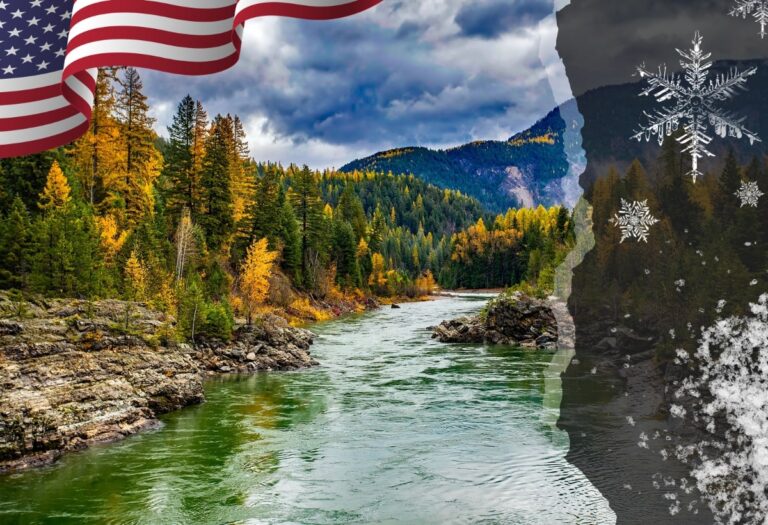Are you curious about the weather in Montana? Have you ever wondered if it snows in the state? If so, you’re in luck! In this post, we’ll explore the climate of Montana and answer the question: Does it snow in Montana?
From the snowy peaks of the Rocky Mountains to the wide open plains, we’ll take a look at the diverse weather patterns that shape the Big Sky State. So grab your warmest coat and join us as we dive into the snowy world of Montana.
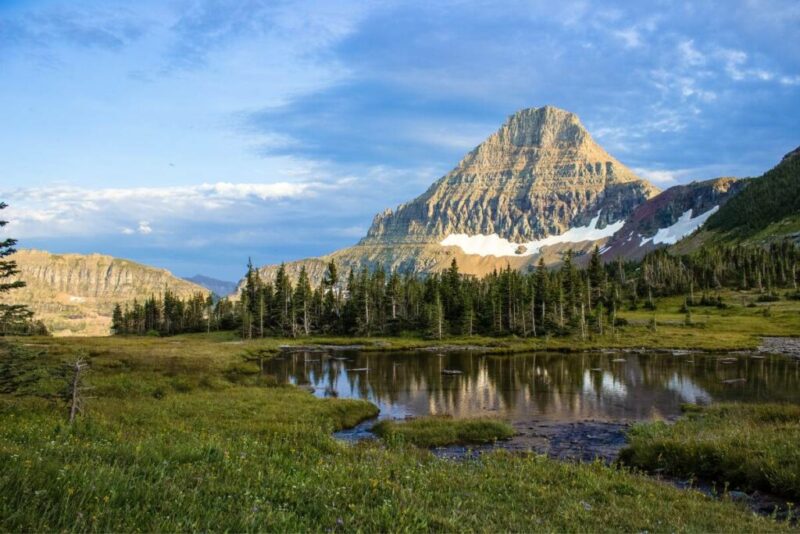
Does It Snow In Montana?
Yes, it does snow in Montana. Montana is located in the northern part of the United States and has a varied climate due to its large size and diverse topography. The state is home to the Rocky Mountains, which receive heavy snowfall during the winter months.
In fact, some parts of Montana receive over 300 inches of snow annually, while other gets as little as 20 inches of snowfall.
The plains and lower elevations of the state also experience snowfall, although it is generally not as heavy as in the mountains.
Overall, Montana is known for its cold, snowy winters, which can last from November to April in some parts of the state.
So, it is advisable to be prepared for cold and snowy weather if you plan to visit or live in Montana during the winter months.
How Often Does It Snow In Montana?
The frequency of snowfall in Montana varies depending on the location within the state. In general, the mountainous areas of Montana receive more frequent and heavier snowfall than the lower elevations.
For example, in the Rocky Mountain region of Montana, which includes areas such as Bozeman and Helena, snowfall is common during the winter months, with the heaviest snowfall occurring in December and January. These areas typically receive around 100 inches of snow annually.
In the lower elevations of the state, such as in the cities of Billings and Great Falls, snowfall is less frequent and generally not as heavy as in the mountains. These areas typically receive around 50 inches of snow annually.
Overall, Montana experiences an average of 49 to 56.9 inches of snowfall per year, according to data from the National Weather Service.
However, it is important to note that this is just an average, and actual snowfall can vary greatly from year to year and from location to location within the state.
When Does it Snow In Montana?
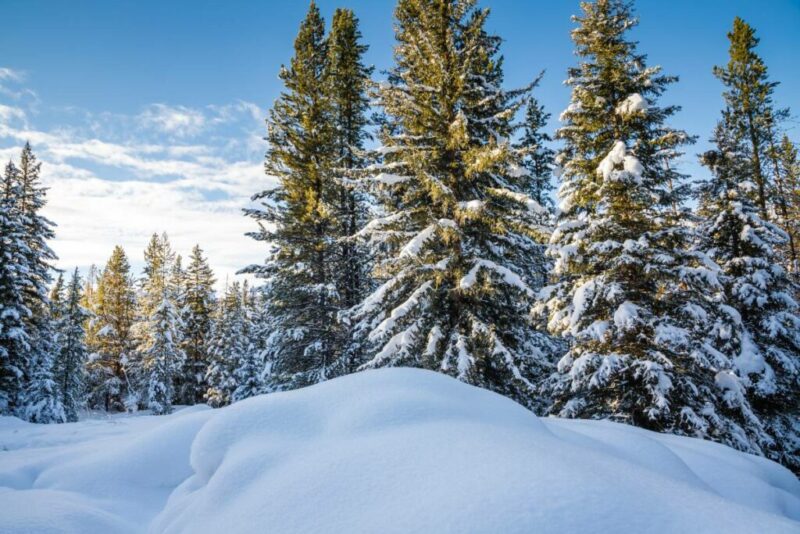
Snowfall in Montana typically begins in the fall and continues through the winter and early spring months. The first snowfall of the season usually occurs in October in the higher elevations of the state and in November in the lower elevations.
Snowfall is most common and heaviest in December and January and usually tapers off in February and March. In the mountains, snowfall can continue into April and even May at higher elevations.
It is important to note that the timing and amount of snowfall in Montana can vary greatly from year to year and from location to location within the state. Factors that can affect snowfall in Montana include elevation, latitude, and proximity to mountain ranges.
The Climate in Montana
Montana has a varied climate due to its large size and diverse topography, which includes the Rocky Mountains, wide open plains, and rolling hills. The state is known for its cold, snowy winters and mild, dry summers.
In the winter, Montana can experience freezing temperatures, with average lows ranging from the mid-teens to mid-20s Fahrenheit (-9 to -4 Celsius), depending on the location.
The mountainous regions of the state can experience even colder temperatures, with average lows in the single digits Fahrenheit (-18 to -12 Celsius). Snowfall is common in Montana during the winter months, with the heaviest snowfall occurring in December and January.
In the summer, Montana generally experiences mild temperatures, with average highs ranging from the mid-60s to low-80s Fahrenheit (18 to 29 Celsius), depending on the location.
The state is known for its low humidity, which makes for comfortable summer weather. However, Montana can also experience occasional heat waves, with temperatures reaching into the 90s Fahrenheit (32 to 37 Celsius).
Overall, Montana has a semi-arid climate, with an average annual precipitation of around 15 inches (38 cm). The state is known for its wide range of weather conditions, and it is not uncommon to experience sunshine, snow, and rain all on the same day. It is important to be prepared for any type of weather when visiting or living in Montana.
The Seasons in Montana
Montana experiences four distinct seasons: spring, summer, fall, and winter. Each season brings its own unique weather and recreational opportunities to the state.
Spring Season in Montana
Spring in Montana is a time of transition from the cold, snowy winter to the warmer, dryer summer. Average temperatures in the spring range from the mid-30s to low-50s Fahrenheit (1 to 12 Celsius).
The state experiences frequent temperature fluctuations during the spring, with warm, sunny days alternating with cold, wet weather. Snowfall is still common in the mountain regions of the state in the spring, although it tends to be less frequent and heavy than in the winter months.
Spring is a great time to visit Montana for skiing and other winter sports in the mountains and for hiking and fishing in the lower elevations.
Summer Season in Montana
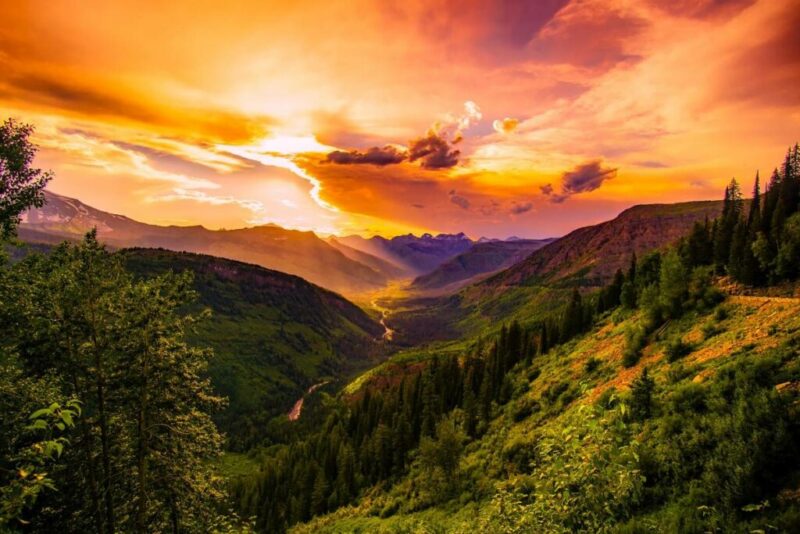
Summer in Montana is generally dry and warm, with average temperatures ranging from the mid-60s to low-80s Fahrenheit (18 to 29 Celsius).
The state experiences long, sunny days and low humidity, making for comfortable summer weather.
Montana is known for its outdoor recreation, and the summer months are a great time to visit for activities such as camping, fishing, hiking, and rafting.
Fall Season in Montana
Fall in Montana is a time of transition from the warm, dry summer to the cold, snowy winter. Average temperatures in the fall range from the mid-30s to low-50s Fahrenheit (1 to 12 Celsius).
The state experiences frequent temperature fluctuations during the fall, with warm, sunny days alternating with cold, wet weather. Fall is a great time to visit Montana for leaf peeping, hunting, and fishing.
Winter Season in Montana
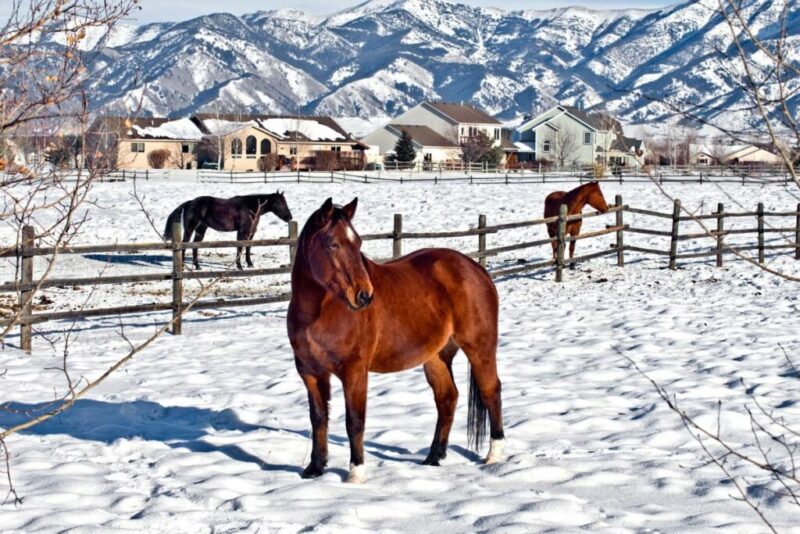
Winter in Montana is cold and snowy, with average temperatures ranging from the mid-teens to mid-20s Fahrenheit (-9 to -4 Celsius).
The state experiences frequent snowfall during the winter months, with the heaviest snowfall occurring in December and January.
Winter is a great time to visit Montana for skiing and other winter sports in the mountains and to experience the beauty of the snowy landscape.
Things to Do in Montana in Winter
Montana is a great destination for winter activities, with its cold, snowy climate and diverse landscape.
Here are a few ideas for things to do in Montana during the winter months:
- Skiing and Snowboarding: Montana is home to several ski resorts, including Big Sky Resort, which is known for its large ski area and abundance of powder.
- Snowshoeing and Cross-Country Skiing: If you prefer non-motorized winter sports, Montana offers plenty of opportunities for snowshoeing and cross-country skiing.
- Ice Fishing: Montana has many frozen lakes and streams, which provide excellent opportunities for ice fishing.
- Snowmobiling: Montana has a network of groomed snowmobile trails, which offer access to some of the state’s most scenic areas.
- Dog Sledding: Montana is home to several dog sledding tours, which allow visitors to experience the thrill of riding through the snowy landscape on a sled pulled by a team of sled dogs.
- Winter Wildlife Viewing: Montana is home to a diverse range of wildlife, including elk, bison, and bald eagles. Winter is a great time to see these animals, as they are often more visible against the snowy backdrop.
- Hot Springs Soaking: Montana has several hot springs, which offer a warm and relaxing respite from the cold winter weather.
- Ice Skating: Many towns in Montana have outdoor ice rinks, which offer a fun and festive way to enjoy the winter weather.
- Winter Festivals and Events: Montana is home to a variety of winter festivals and events, such as the Snow King Winter Carnival in Jackson and the Sweetgrass Hills Winter Festival in Havre.
No matter what your interests are, Montana has something to offer in the winter months. Be sure to dress warmly and be prepared for cold and snowy weather when visiting Montana during the winter.
Conclusion:
In conclusion, it does snow in Montana, especially in the mountainous regions of the state.
The state receives an average of 56.9 inches of snowfall per year, although actual snowfall can vary greatly from year to year and from location to location within the state.
Montana is a great destination for winter activities, such as skiing, snowshoeing, ice fishing, and snowmobiling.
Be sure to dress warmly and be prepared for cold and snowy weather when visiting or living in Montana during the winter months.
Related Articles
- Does It Snow In Idaho?
- Does It Snow In Salt Lake City?
- Does It Snow In Tacoma, Washington?
- Does It Snow In Olympia, Washington?
FAQs About Snow In Montana
Here are some frequently asked questions about “Does it snow in Montana?”:
How Much Snow Does Montana Typically Receive Each Year?
It is important to know that actual snowfall can vary greatly from year to year and from location to location within the state. Some parts of Montana, such as the Rocky Mountain region, can receive over 300 inches of snow annually.
When Does It Start Snowing in Montana?
Snowfall is quite common and heaviest in the month of December and January and usually tapers off in February and March.
Is Montana a Good Place to Go Skiing?
Montana is known for its deep, powdery snow, which makes for excellent skiing conditions.
Is Montana Cold All Year Round?
Is Montana a Good Place to Visit in the Winter?
Montana is also home to a variety of winter festivals and events, such as the Snow King Winter Carnival in Jackson and the Sweetgrass Hills Winter Festival in Havre. Be sure to dress warmly and be prepared for cold and snowy weather when visiting Montana in the winter.
Related Posts:
- Does It Snow In Prague? What You Need to Know About…
- Does It Snow In Northern Ireland? Can You Catch a Flurry?
- Does It Snow In Idaho? Brr-inging You the Truth!
- Does Car Insurance Cover Snow Damage? Essential Tips…
- Does It Snow In Spain? Should You Expect a Chilly Surprise?
- Does It Snow In Japan? Should You Bring Kimono or Snowsuit?

